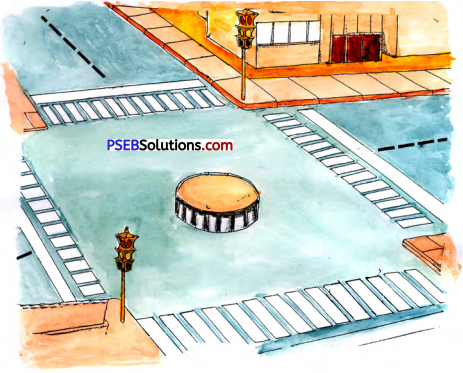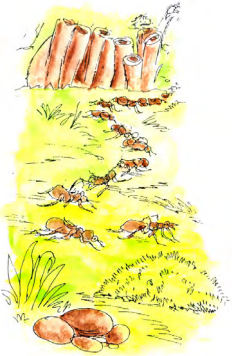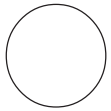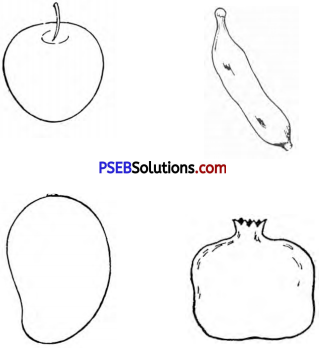Punjab State Board PSEB 5th Class Hindi Book Solutions Chapter 9 तितली रानी (कविता) Textbook Exercise Questions and Answers.
PSEB Solutions for Class 5 Hindi Chapter 9 तितली रानी (कविता) (2nd Language)
तितली रानी (कविता) अभ्यास
नीचे गुरुमुखी और देवनागरी लिपि में दिये गये शब्दों को पढ़ो और हिंदी शब्दों को लिखने का अभ्यास करो :
- ਤਿਤਲੀ = तितली
- ਬਸੰਤ = बसंत
- ਰੰਗੋਲੀ = रंगोली
- ਗਿਆਨੀ = सयानी
- ਨਾਨੀ = नानी
- ਪਰੀ = परी
![]()
नीचे एक ही अर्थ के लिए पंजाबी और हिंदी भाषा में शब्द दिये गये हैं। इन्हें ध्यान से पढ़ो और हिंदी शब्दों को लिखो :
- ਖੰਭ = पंख
- ਵਨ-ਸੁਵੰਨੀ = रंग-बिरंगी
- ਰੁੱਤ = ऋतु
- ਹੱਥ = हाथ
- ਸਪਨਾ = स्वप्न
- ਸੁਨਹਿਰਾ/ਸੋਨਾ = स्वर्ण
पढ़ो, समझो और लिखो
स् + व = स्व, प् + न = प्न = स्वप्न
स् + व + र् + ण = स्व र्ण
कविता की पंक्तियाँ पूरी करो :
(1) रंग-बिरंगी ………………………………..,
पंखों पर ………………………………..।
(2) रुत बसंत में ………………………………..,
गीत खुशी के ………………………………..।
उत्तर :
(1) रंग-बिरंगी जिसकी चोली।
पंखों पर जिसके रंगोली।
(2) रुत बसन्त में आती तितली,
गीत खुशी के गाती तितली।
बताओ
प्रश्न 1.
तितली के पंख कैसे होते हैं?
उत्तर :
तितली के पंख रंग-बिरंगे होते हैं।
प्रश्न 2.
तितली किस ऋतु में दिखाई देती है?
उत्तर :
तितली वसन्त ऋतु में दिखाई देती है।
प्रश्न 3.
नानी किसकी कहानी सुनाया करती थी?
उत्तर :
नानी स्वर्ण परी की कहानी सुनाया करती थी।
![]()
तुक मिलाओ
- चोली = रंगोली
- सजाती = ………………………………..
- इठलाती = ………………………………..
- आती = ………………………………..
उत्तर :
- चोली = रंगोली।
- सजाती = शर्माती।
- इठलाती = लुभाती।
- आती = गाती।
वाक्य बनाओ
- रंग-बिरंगी
- बसंत
- कहानी
- सयानी
उत्तर :
- रंग-बिरंगी-लाल किला रंगबिरंगी रोशनी से सजा हुआ था।
- बसन्त-बसन्त में रंग-बिरंगे फूल खिलते हैं।
- कहानी-नानी माँ ने हमें कहानी सुनाई।
- सयानी-रानी अब सयानी हो गई है।
रचनात्मक कौशल
तितली को उड़ते हुए देखो। तितली का चित्र बनाओ। उसमें रंग भरो।
अध्यापन निर्देश
1. अध्यापक गीत एवं अभिनय प्रणाली द्वारा कविता का सस्वर गायन करवाए। बच्चों के मन में प्राकृतिक वस्तुओं के प्रति प्रेम जागृत करे।
2. पाठ में ‘ऋतु’ को बोलचाल की भाषा में ‘रुत’ कहा गया है।
3. अध्यापक बच्चों को सभी ऋतुओं का ज्ञान देते हुए विशेष रूप से ऋतुराज बसंत ऋतु’ के बारे में बताये।
![]()
तितली रानी (कविता) बहुवैकल्पिक प्रश्न
प्रश्न 1.
पंजाबी शब्द ‘उिँउली’ का हिन्दी अर्थ है : चितली/तितली/पुतली/नेतरी
उत्तर :
तितली
प्रश्न 2.
पंजाबी शब्द ‘व’ का हिन्दी अर्थ है : हल्की/हाथी/हाथ/हाथों
उत्तर :
हाथ
प्रश्न 3.
तितली के पंख कैसे होते हैं?
(i) रंग
(ii) बिरंगे
(iii) रंग-बिरंगे
(iv) बेरंग।
उत्तर :
(iii) रंग-बिरंगे
प्रश्न 4.
नानी किसकी कहानी सनाया करती थी?
(i) स्वर्ण की
(ii) परी की
(iii) स्वर्ण – परी की
(iv) राक्षस की।
उत्तर :
(iii) स्वर्ण-परी की
प्रश्न 5.
चोली से तुकबन्दी करते हुए शब्द मिलाएँ।
सही पर गोला लगाओ।
(i) रंगोली
(ii) तुली
(iii) कुली
(iv) टुली।
उत्तर :
(i) रंगोली
![]()
प्रश्न 6.
‘इठलाती’ से तुकबन्दी करते हुए शब्द मिलाएं।
(i) जीती
(ii) लुभाती
(iii) पत्री
(iv) छत्री।
उत्तर :
(ii) लुभाती।
तितली रानी (कविता) Summary in Hindi
1. तितली रानी, तितली रानी,
अपने घर को बड़ी सयानी।
रंग-बिरंगी जिसकी चोली,
पंखों पर जिसके रंगोली।
फूलों पर उड़ती-इठलाती,
बच्चों को यह बहुत लुभाती॥
शब्दार्थ :
- सयानी = समझदार।
- चोली = वस्त्र।।
- इठलाती = गर्व करती।
- लुभाती = अच्छी लगती है।
सरलार्थ-
प्रस्तुत पंक्तियाँ हमारी पाठ्य-पुस्तक में संकलित कविता ‘तितली रानी’ से ली गई हैं। उसमें कवि तितली की सुन्दरता का वर्णन करते हुए कहता है कि तितली रानी अपने घर के लिए बहुत समझदार है। उसके रंग-बिरंगे पंख हैं। ऐसा लगता है जैसे उसके पंखों पर किसी ने रंगदार रंगोली सजा दी है। फूलों पर यह इठलाती हुई उड़ती जाती है। बच्चों को भी यह बहुत अच्छी लगती है।

2. आँखों में यह स्वप्न सजाती,
हाथ लगाने से शर्माती।
रुत बसन्त में आती तितली,
गीत खुशी के गाती तितली।
कभी कहा करती थी नानी,
स्वर्ण परी की एक कहानी।
तितली रानी, तितली रानी,
अपने घर को बड़ी सयानी॥
![]()
शब्दार्थ :
- स्वप्न = सपने।
- शर्माती = लज्जाती।
- रुत = ऋतु, मौसम।
- खुशी = प्रसन्नता।
- स्वर्ण-परी = सुनहरी परी।
- सयानी = समझदार।
सरलार्थ-
प्रस्तुत पंक्तियों में कवि तितली की सुन्दरता की प्रशंसा करते हुए कहता है कि यह सुन्दरतितली अपनी आँखों में सुन्दर सपने सजाती है। हाथलगाने से वह शरमा जाती है। जब बसन्त ऋतु आतीहै तब यह तितली प्रसन्नता से भर कर खुशी के गीत गाती है। कवि कहता है कि कभी हमें नानी सुनहरीपरी की एक कहानी सुनाती थी। तितली को देखकरहमें लगता है कि यही वह सुनहरी परी है। तितलीरानी, अपने घर के लिए बड़ी समझदार है।
तितली रानी (कविता) शब्दार्थ Meanings
- रंगोली = अलग-अलग रंगों का मेल, त्योहार आदि पर रंगीन बुरादे से फर्श पर की जाने वाली चित्रकारी
- स्वप्न = सपना
- रुत = ऋतु
- लुभाना = मोहित करना
- स्वर्ण = सोना
















